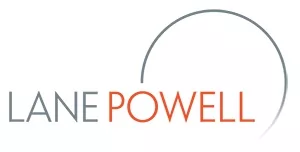A federal appeals court has halted the federal Occupational Safety and Health Administration's (OSHA) Emergency Temporary Standard (ETS) implementing President Biden's soft vaccine mandate (i.e., vaccine or testing). The ETS would require employers with 100 or more employees to ensure their employees are fully vaccinated against COVID-19 or provide documentation of a negative COVID-19 test at least every seven days. We provide a summary description of key aspects of the ETS below.
Within days after OSHA published the ETS, attorneys general from several states and several businesses and advocacy groups filed lawsuits to fight the mandate in court. On November 6, in response to one of the lawsuits, the Fifth Circuit granted a temporary injunction to stay enforcement of the ETS while the court considers its validity. The court's decision does not specify whether it applies nationwide, and it may apply only to the parties to the lawsuit (the states of Louisiana, Mississippi, Texas, South Carolina, and Utah). The Fifth Circuit court ordered the parties to submit their briefs on November 8 and 9 and promised an expedited decision.
The Fifth Circuit case is one of many lawsuits that have or will be filed in the coming days (at least three other circuit courts of appeals have similar challenges pending), and it is highly likely the U.S. Supreme Court will eventually be asked to consider the issue.
In the meantime, states that have their own state-OSHA plan may proceed with drafting state-equivalent safety rules. (States with state-OSHA plans are required to adopt their own emergency ETS "at least as effective" as the federal ETS within 30 days.) These states, which include Washington, Oregon, California, and Alaska, could elect to enact a new safety ETS even before a final decision is issued on the validity of the federal ETS. These state ETS rules can be more expansive than the federal ETS, and will have their own deadlines and compliance dates. For example, state emergency plans could apply the soft vaccine mandate to employers with 50 or more employees.
What Should Employers Do in Light of the Uncertain Future of the Federal ETS?
OSHA cannot enforce the vaccine mandate in any jurisdiction where an applicable injunction is in place. However, if and when the injunctions are lifted, employers will be required to distribute written policy and certain notices to employees by December 6, unless OSHA extends the deadline or the courts take longer to issue a final decision. Prudent employers will start taking action now by:
- Monitoring state emergency rule-making, if they are located in a state with a state-OSHA plan;
- Considering how they will implement the ETS (or applicable state safety ETS);
- Preparing a draft vaccine and/or testing policy; and
- Notifying employees now that they may need to comply with this ETS in the coming months; and encouraging them to get vaccinated.
What Does the Federal ETS Require?
To assist employers with their planning efforts, below are some key details of the ETS.
- Health care workers/health care employers and federal contractors are subject to different rules that require vaccination, not the ETS. The Centers for Medicare & Medicaid Services issued a separate rule requiring most employees of certain Medicare and Medicaid-certified providers and suppliers to be fully vaccinated (subject only to legally-required accommodations). Similarly, federal contractors that are subject to President Biden's Executive Order mandating vaccination.
- Some employees are exempted from the soft vaccine mandate, including (i) fully remote employees (but not partially remote employees); (ii) employees who do not report to a workplace where other individuals are present; and (iii) employees who perform their work exclusively outdoors. Also, employees who qualify for religious or disability accommodations may be excused from the vaccine and/or testing requirement.
- Employers can choose to require vaccination or allow testing. The ETS requires employers maintain a fully-vaccinated workforce or, in the alternative, allow its employees to present negative test results on at least a weekly basis. An employer can choose to mandate vaccines (except in the case of legally-required accommodations) or just to require testing, or some combination thereof. Basically, the employer is free to choose which method it wants to implement in order to comply with the mandate and is free to administer discipline for failure to comply with the company's policy.
- Employees get paid time off to get vaccinated and to recover. Employers must provide up to 4 hours of paid time to get vaccinated, and cannot require employees to use existing paid time off or leave for this purpose. Employers also must grant at least two days of paid time off to help recover from any ill effects from the vaccine, but this time can be deducted from an employee's existing paid time off or leave bucket.
- Employers don't have to pay for testing and at-home tests are not sufficient. Under the ETS, employers are not required to provide paid time off for testing for an employee who chooses to undergo weekly testing rather than get vaccinated. The employer also need not pay the cost of the test itself. However, some laws (state and federal), particularly in the case of non-exempt employees, may obligate an employer to pay for testing time. Notably, a medical or health care provider (which can be a pharmacist) must be involved in administering the test; at-home test kits are not sufficient under the ETS.
- Unvaccinated workers must wear masks while in the workplace and work-related settings.
- The ETS includes a number of recordkeeping and employee notification requirements that go into effect on December 6, 2021 (assuming the ETS is upheld before then).These include, but are not limited to creating and distributing a written vaccination and/or testing policy with specific elements, determining and maintaining a roster reflecting the vaccination status of all employees, providing employees specific information about the ETS, and reporting work-related COVID-19 hospitalizations and deaths.
The content of this article is intended to provide a general guide to the subject matter. Specialist advice should be sought about your specific circumstances.


